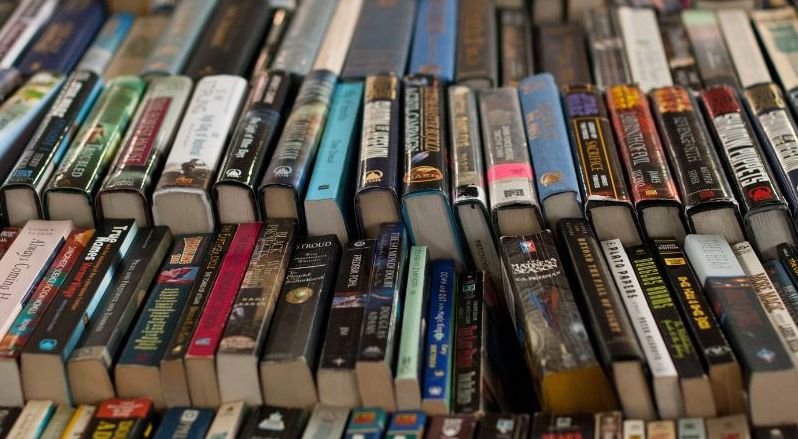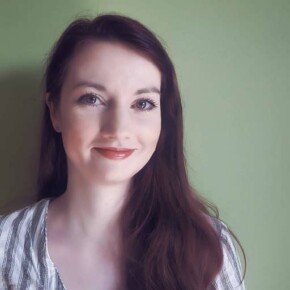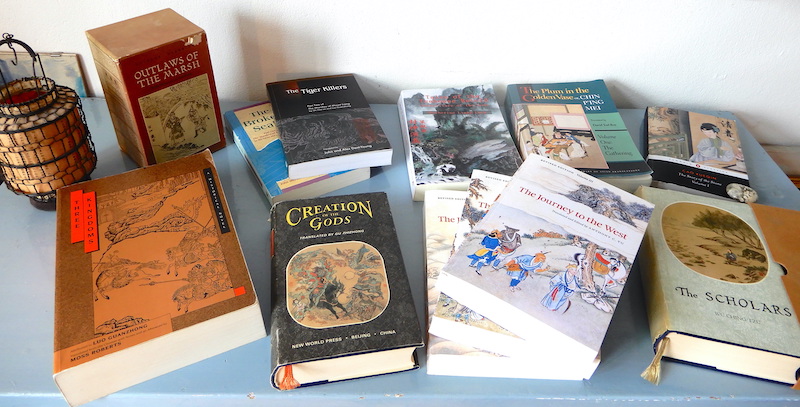
 Today’s guest post is by writer Jason Brick. He has published his work in all sorts of genres and formats, with over 3000 articles, short stories, novels and non-fiction to his name – and about 20 books which are not, because he has ghost-written them. Jason also edits and crowdfunds anthologies. Next to writing, Jason loves martial arts and travel. We’re happy Jason has taken the time to explain flash fiction for us.
Today’s guest post is by writer Jason Brick. He has published his work in all sorts of genres and formats, with over 3000 articles, short stories, novels and non-fiction to his name – and about 20 books which are not, because he has ghost-written them. Jason also edits and crowdfunds anthologies. Next to writing, Jason loves martial arts and travel. We’re happy Jason has taken the time to explain flash fiction for us.
There’s an old saying. Every novelist is a failed short story writer, and every short story writer is a failed poet. I don’t know how much I believe that, but the adage leaves out another genre: flash fiction.
Depending who you ask, flash fiction refers to fiction in the 5,000 words or fewer range, with most falling more into the under-2,000 category. A famous example is attributed to Hemingway, consisting of just six words:
“For Sale: Baby shoes. Never used.”
If you ask some folks, they’ll give you all kinds of subdivisions. A “drabble” is 100 words or so. A “fragment” is under 50….that’s all well and good, but really flash fiction is simply super-short tales.
I like flash fiction so much I started a semiweekly newsletter that sends super-short stories to mailboxes all over the world. It’s called Flash in a Flash. We use a cutoff of 1,000 words, are always accepting submissions, and have come here today to chat about why flash fiction is fun, why authors might want to try some, and some places you can get started when you do. (more…)

Guest post by Ali Luke.
 Ali Luke is a freelance writer and novelist who blogs about making the most of your writing time at Aliventures. For her best tips on making time to write, sign up for her email newsletter: you’ll receive a free copy of her mini ebook Time to Write: How to Fit More Writing Into Your Busy Life, Right Now.
Ali Luke is a freelance writer and novelist who blogs about making the most of your writing time at Aliventures. For her best tips on making time to write, sign up for her email newsletter: you’ll receive a free copy of her mini ebook Time to Write: How to Fit More Writing Into Your Busy Life, Right Now.
Pacing in fiction is how quickly—or slowly—the story progresses. The right pace for a story depends on its genre. If you’re reading a thriller, you’ll expect a fast-paced read with lots of action; if you’re reading a historical novel or epic fantasy, you might enjoy a slower pace with lots of emphasis on the world of the story.
It’s tough to get pacing spot-on when you’re drafting. It might take you years to write a book that takes just hours for someone to read. What feels “slow” to you as you write might actually go by pretty quickly on the page. Or, you may find that you repeat yourself, going over the same narrative ground multiple times, because you barely remembered what you wrote six months ago.
So, don’t worry about your pacing as you draft. Instead, address it in the redrafts—ideally, with the help of beta readers, but even simply reading over your full manuscript yourself can help you spot areas where the pace feels off.
Here’s what to look for when redrafting your work. (more…)

Guest post by Iris Marsh.
 In this guest post, indy writer and editor Iris Marsh describes how reading novels comparable to your own project can help you hit genre conventions and scenes the audience expects.
In this guest post, indy writer and editor Iris Marsh describes how reading novels comparable to your own project can help you hit genre conventions and scenes the audience expects.
Iris is an editor for indie authors and the author of the YA urban fantasy novel Illuminated. Iris feels everyone has a story to tell, and she loves to help other authors hone their story so they can share it with the world. To her, building the confidence of authors is key. That way, they don’t just have a better story, but they also feel more confident sharing it. Check out her website for tips and her free self-editing course.
You’ve written your story, yet you feel that there are several moments missing. The middle seems rushed or too slow. Or perhaps you’re unsure whether the climax packs the punch you were looking for.
You do know this: the story needs some editing.
But how do you know what’s missing? How can you identify what you need to improve?
Reading a few books in your genre can give you the answers you seek. By comparing them, you’ll find out what elements they have in common and how you can apply these to your own story.
Doing this is a great practice either before you start writing (to help you plot your story) or after you’ve written your first draft (to find out if your story hits the right moments).
In this article, we’ll discuss which books you should pick to read, what you should pay attention to when reading, how to compare what you’ve read, and how you can use this information to improve your story. (more…)
 Today’s guest post is by author Stefan Emunds.
Today’s guest post is by author Stefan Emunds.
Stefan’s favorite genre is visionary fiction – stories that have an enlightenment dimension. Enlightenment and storytelling have interesting parallels, which prompted Stefan to write a book about storytelling – The Eight Crafts of Writing.
Get a glimpse of his approach to story craft in his article.
Art and Craft
Storytelling is both art and craft, authoring and writing, plotting and pantsing.
1.1 Art and Authoring
Art is creativity. Creativity requires receptivity to the Muse and its inspirations.
Inspirations arrive as thought-images, which writers put into words. How to turn thought-images into words and assemble those into a structured story with vivid characters and an engrossing world is a matter of craft and skill.
1.2 Craft and Writing
The literal meaning of Kung Fu is a discipline achieved through hard work and persistent practice. Writing is Kung Fu.
Craft gives form to inspirations. Forms limit. Writers love the artistic side of writing, less so crafting, in particular, Story Outline. Writers are prone to procrastinate crafting.
But no limitations, no story. No canvas, no painting. No net, no tennis.
Understanding the difference between freedom and dominion helps to appreciate the constraints of craft. Freedom is a means to an end. We want to be free to do something, for example, to write a book. That’s all there is to freedom. Dominion, on the other hand, is mastery of structure. (more…)
Universal storytelling principles behind the most successful movie series ever.

The sumptuous music of John Barry, the stunning set designs of Ken Adam, the directorial skills of Terence Young or Guy Hamilton, the innovative editing of Peter Hunt, the screen presence of Sean Connery, the zangy theme tune by Monty Norman, memorable actresses, spectacular stunts, and exotic location scouting – a fortunate convergence of individual talents built up the abiding popularity of Ian Fleming’s literary creation, the British MI6 agent James Bond.
Most writers don’t have access to such a talent pool, nor do most authors write action-packed spy capers. Also, 007 stories in particular seem so specific a category that authors might not consider that their own works have much in common with them. So one might be tempted to think that most writers can’t learn anything useful from James Bond.
Many people say there is a James Bond formula. Guy Hamilton, director of four of the early Bond movies, has said not. But there are certainly recurring scene types and structural elements that bear examination. A closer look reveals at least seven dramaturgical principles that any author could consider applying.
- The Kick-off Event
- The Real Reason for M
- The Real Reason for Q
- A Timely Death
- The Antagonist
- Revelation and Confrontation
- Humps
(more…)

You have likely heard of The Divine Comedy, of Don Quixote, of Shakespeare – but have you heard of the Three Kingdoms? Of Sun Wukong? Of Cao Xueqin?
We asked ourselves, how are stories that had no contact with the western way of composing narratives different? Are the principles of storytelling really universal across cultures? Our idea was to find out by taking a look at classical Chinese literature. We discovered a number of interesting aspects to the Chinese way of telling stories, and have summarised them here.
In this post, we’ll tell you about the novels we read. Each was a revelation in its own way. The long-form novel came along quite suddenly in China just over 500 years ago. Generally recognised as the first great Chinese novel is Three Kingdoms, which appeared around 1494 CE. The most modern of the novels we’re considering here was published around 1760. That means we’re looking at Ming and Qing dynasty literature.
So which classical Chinese novels should you read? Here’s our list of favourites.
Our Top 7 Classical Chinese Novels
Nr 1
(more…)
“Where’s the story set?”
The answer provides many clues about the story in question. While we tend to ask “where”, the setting actually encompasses somewhat more than location.
In Film, the term location is generally used to refer to scenes that are shot outdoors rather than on a sound stage or in the studio. In the specific context of filmmaking, the word “setting” is often used in scripts is a hyper-ordinate term to refer to both types of shooting, indoors in a controlled environment and out “on location”.
But for stories in general, the concept of setting refers to rather more. Let’s find out how setting relates to
- time
- genre
- story world
- premise
Time
Each Star Wars story reminds us of the setting before it even starts: “A long time ago in a galaxy far, far away”. In being reminiscent of “once upon a time”, the famous opening establishes that the setting is essentially a fairy tale with spaceships.
“Middle-earth” is a valid answer to the question of setting for The Lord of the Rings. One might be tempted to explain that Middle-earth is a fictitious realm, maybe say something about how its quasi-medieval technology relates to the actual Earth’s history, or possibly mention the connection to the Midgard of Norse mythology.
So in addition to describing physical space, both these examples of setting contain hints and associations about the time when the events of the story take place. (more…)
Detectives and other investigators abound on our TV and cinema screens.
In the western world, crime fiction – mystery, thrillers, suspense, whodunnits, etc. – makes up somewhere between 25 and 40 percent of all fiction book sales. Why is the crime genre so popular?
Crime is fascinating, to be sure, because most of us don’t commit it. But the popularity of the genre has little to do with crime per se. It has far more to do with the very essence of how storytelling works.
In this article we will be looking at:
- Cause and Effect
- Agency
- The Whydunnit
- The Narrative Principle
- Why Some People Don’t Like Crime Stories
- The Search For Truth, or Gaining Awareness
- How Crime Is Like Comedy
Cause and Effect
Crime fiction exhibits most clearly one of the fundamental rules of storytelling: cause and effect. In crime fiction,(more…)
 Today’s guest post is by writer Jason Brick. He has published his work in all sorts of genres and formats, with over 3000 articles, short stories, novels and non-fiction to his name – and about 20 books which are not, because he has ghost-written them. Jason also edits and crowdfunds anthologies. Next to writing, Jason loves martial arts and travel. We’re happy Jason has taken the time to explain flash fiction for us.
Today’s guest post is by writer Jason Brick. He has published his work in all sorts of genres and formats, with over 3000 articles, short stories, novels and non-fiction to his name – and about 20 books which are not, because he has ghost-written them. Jason also edits and crowdfunds anthologies. Next to writing, Jason loves martial arts and travel. We’re happy Jason has taken the time to explain flash fiction for us.







